Building a collection and using art to personalize your space
Words Jane Zatylny, Photography Lia Crowe
Whether it is your child’s first painting, an inherited watercolour, an old family photograph or a piece of functional pottery—art brings incredible meaning to our personal lives. As the artist Pablo Picasso once put it, “Art washes away from the soul the dust of everyday life.”
In a sea of manufactured goods, art also humanizes our homes.
“I always like to look at it as the personalization of a space,” says Hannah Katey Berger, principal interior designer and owner of Hannah Katey Interior Design in Kelowna. “When you have a neutral space, art really adds that personality.”
When I was a teenager, I papered my bedroom walls with pages torn from fashion magazines, my own drawings and posters of my teen idols. A great compliment from a visiting friend was always, “Wow, there is so much to look at in here!” Today my condo walls are covered with colourful paintings, my own photographs, large pieces of pottery and art glass. There’s still a lot to take in, and it may not be to everyone’s taste—but that is perfectly okay.
Art is powerful because it takes a room to the next level, explains Brooke Hatfield, interior designer and principal of Brooke Hatfield Design in Victoria. “Even if two people have the exact same furniture in a room, you will get a completely different vibe and understand so much about Person A and Person B, just from their selection of art.”
The art you choose to display in your home can also profoundly influence the way you feel. It can calm you or it can energize you, depending on the pieces you choose—and where you choose to display them.
“At museums, we often see people staring at a piece of art for a long period of time,” says Lucila Diaz, founder and creative director of Harmony Sense Interiors in North Vancouver. “That’s because the art is making them feel something beyond the colours or the lines or the composition.”
The same holds true when art is integrated into interior design, she stresses: “I know I’ve done my job when people say, ‘I don’t really know what it is, but it feels so peaceful and harmonious to be in this space.’”
Ultimately, art helps us create a beautiful sanctuary from the world, says Brooke. “If we have pieces in our spaces that we love, it can really bring us home to ourselves.”
Building a collection
When choosing art for your home, the nearly infinite selection of styles, colours and sizes can often seem overwhelming.
“Many of my clients say, ‘I wouldn’t know where to start’ when I ask them about art for their homes,” says Brooke.
A simple rule to follow is to buy what you love, she adds: “Follow your gut, and you won’t go wrong.”
TEN tips to help you source art for your home:
- Building an art collection takes time, so it’s wise to buy art piece by piece.
- “Be patient and have fun with it,” says Hannah. “Explore different artists and different mediums. There is nothing wrong with liking or disliking certain styles. When it’s right for you, you’re going to appreciate it in your space.”
- Start by showcasing your children’s art, suggests Brooke. “One of my own favourite pieces of art is a series of three cards my god-daughter created in preschool, which I matted and framed.”
- Visit museums and galleries to get a sense of what you like.
- Studio tours and art walks are another great way to build a collection; you can also forge a meaningful connection with the artist and learn the story behind a particular work of art.
- Parker Street Studios in Vancouver, a 152,000-square-foot warehouse, is home to more than 100 artists’ galleries and studios, says Lucila. “It’s a great place to look for or even commission art.”
- Etsy, the global e-commerce website for makers, is another good place to source art, whether you purchase a digital download or an original piece.
You can also explore Instagram for artists’ profiles and follow and purchase art through that platform, says Brooke. - Online auctions like MaxSold can also be a great way to browse and find art to suit pretty much all tastes and styles.
- Try to avoid settling by “matching” a piece of art to a sofa or other piece of furniture; instead, choose a piece that speaks to you, says Hannah. “Art can act as a major focal point, which should inspire the remaining space. You can add cohesive harmony to your interior by pulling colours from the artwork through accent pillows and accessories.”
- Many public art galleries offer art rental and sales. This is a great way to test drive a painting style or size in your home before buying.
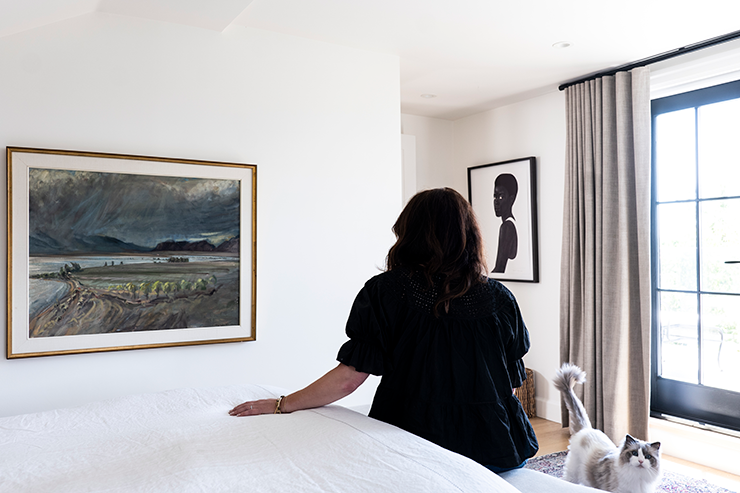
Hanging, spacing and placing art
How we hang or display our art pieces can greatly affect their impact in our homes. The most common mistake, according to the interior designers I spoke with, is hanging a painting too high or too low. Here are some tips about hanging, spacing and placing art.
- Take your cue from art galleries and museums and make sure that the middle of the art work is at your eye level.
- Another rule of thumb is to hang paintings 60 inches from the floor to the centre of the art for a room with an eight-foot ceiling. Adjust for higher ceiling heights.
- When hanging art over a sofa, mantle or dresser, make sure it relates to that piece and isn’t too high above it. Usually four to eight inches is ideal, says Brooke.
- Be mindful about scale when hanging artwork, as pieces can sometimes be too large or small for a particular space, says Hannah. With too-small pieces, consider adding an extra-large matte when framing, or group items together.
- Try to make sure that the distance between pieces in a gallery wall is consistent.
- Think outside of two-dimensional artwork, says Brooke. “A friend of mine collected those small blue and white houses that a Dutch airline gave away. Displayed together, they formed a powerful piece of art.”
- Make sure your artwork is properly secured to the wall. “You don’t want things to fall,” says Lucila. “It’s also important to protect your investment with UV protected glass, so it won’t be damaged by sunlight.” Don’t be afraid to layer art by putting a lamp in front of a painting, suggests Brooke. “You don’t want to obliterate the artwork, but layering is what makes a space interesting.”
- Use painters’ tape or trace your artwork onto newsprint to test out a gallery wall.
- Consider the overall atmosphere you want to create when hanging art, says Lucila. “If you have a piece of art you love, make it the centrepiece of your room.”

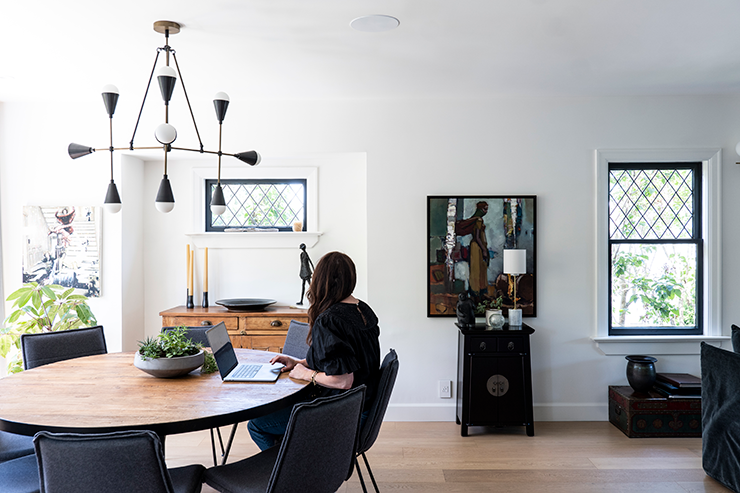
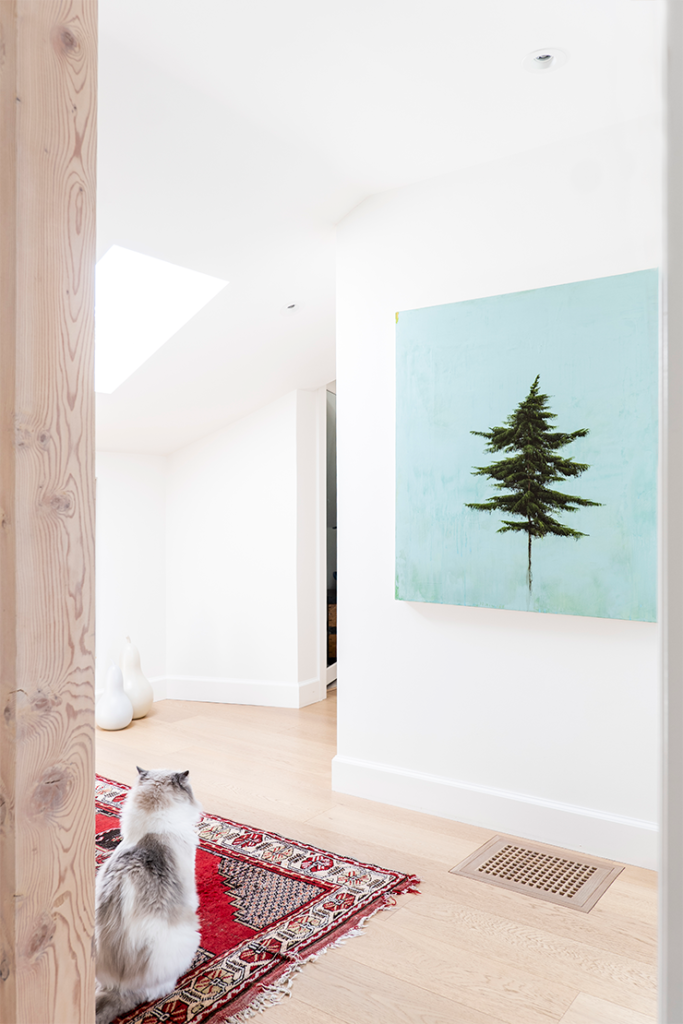
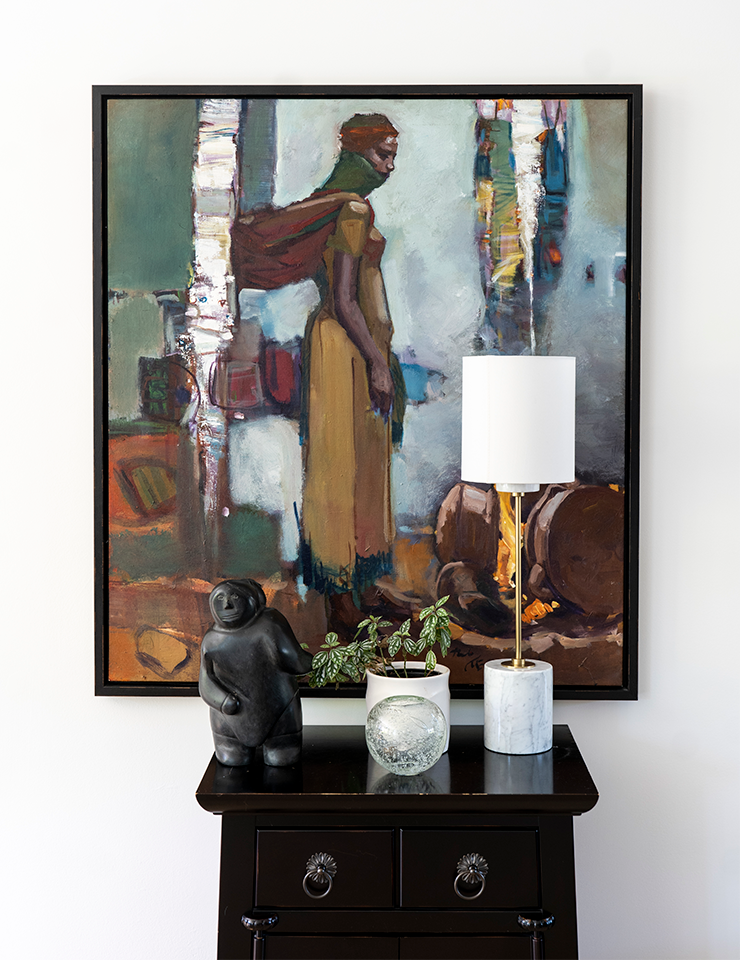
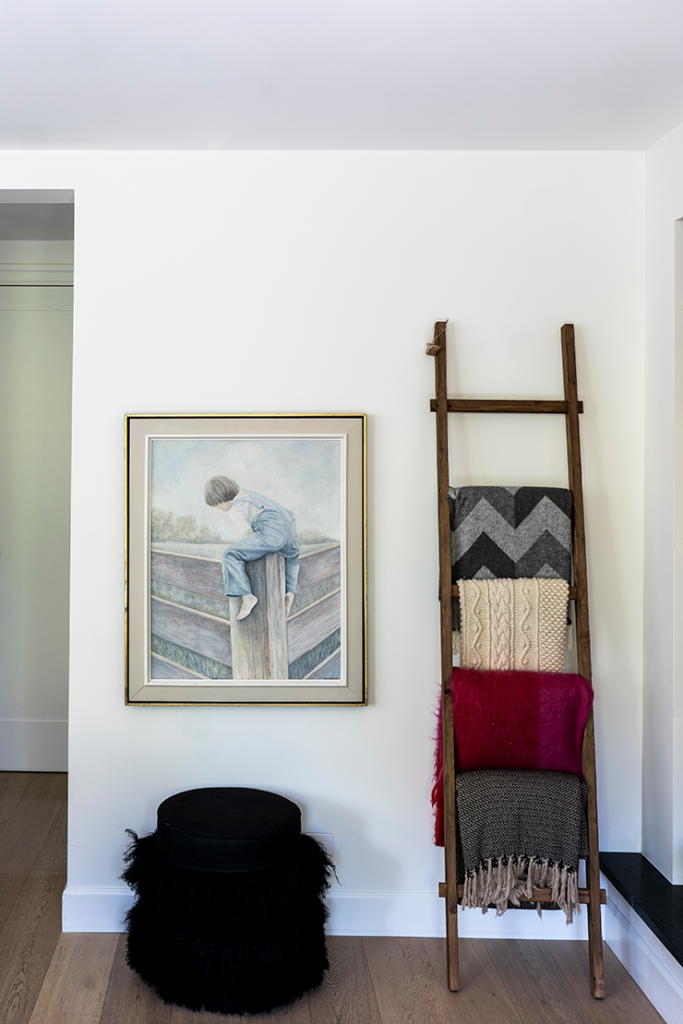
 Beautiful boards
Beautiful boards

